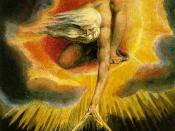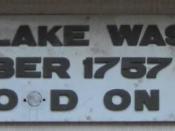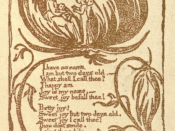Explication of William Blake's "London" William Blake's poem "London" takes a complex look at life in London, England during the late seventeen hundreds into the early eighteen hundreds as he lived and experienced it. Blake's use of ambiguous and double meaning words makes this poem both complex and interesting. Through the following explication I will unravel these complexities to show how this is an interesting poem. To better understand this poem some history about London during the time the poem was written is helpful. London was the ". . . undisputed cultural, economic, religious, educational, and political center" of England in the seventeen and eighteen hundreds. It was a city of "warehouses, docks, factories, prisons, palaces and slums, of beggars, laborers, shopkeepers, and bankers" (History). The industrial revolution was in full swing and the streets were filthy, the water and air were polluted, and there were rats everywhere. The famous "London fogs" were created from the burning of coal.
The average Londoner lived until age 29, and as many as 1 in 8 drank themselves to death. While there were wealthy merchant and professional classes, the members of the poor grew and were crowded into filthy slums of the city (History). Keeping this history in mind lets take a look at the poem. Repetition and rhyme are an integral part of Blake's "London." The first stanza of the poem shows this repetition and rhyme. I wander through each chartered street, Near where the chartered Thames does flow, And mark in every face I meet Marks of weakness, marks of woe. (1-4) This repetition is a type of rhythm in the poem. According to John Nims and David Mason rhythm is "something that happens with such regularity that we can resonate with it, anticipate its return, and move our body in...


